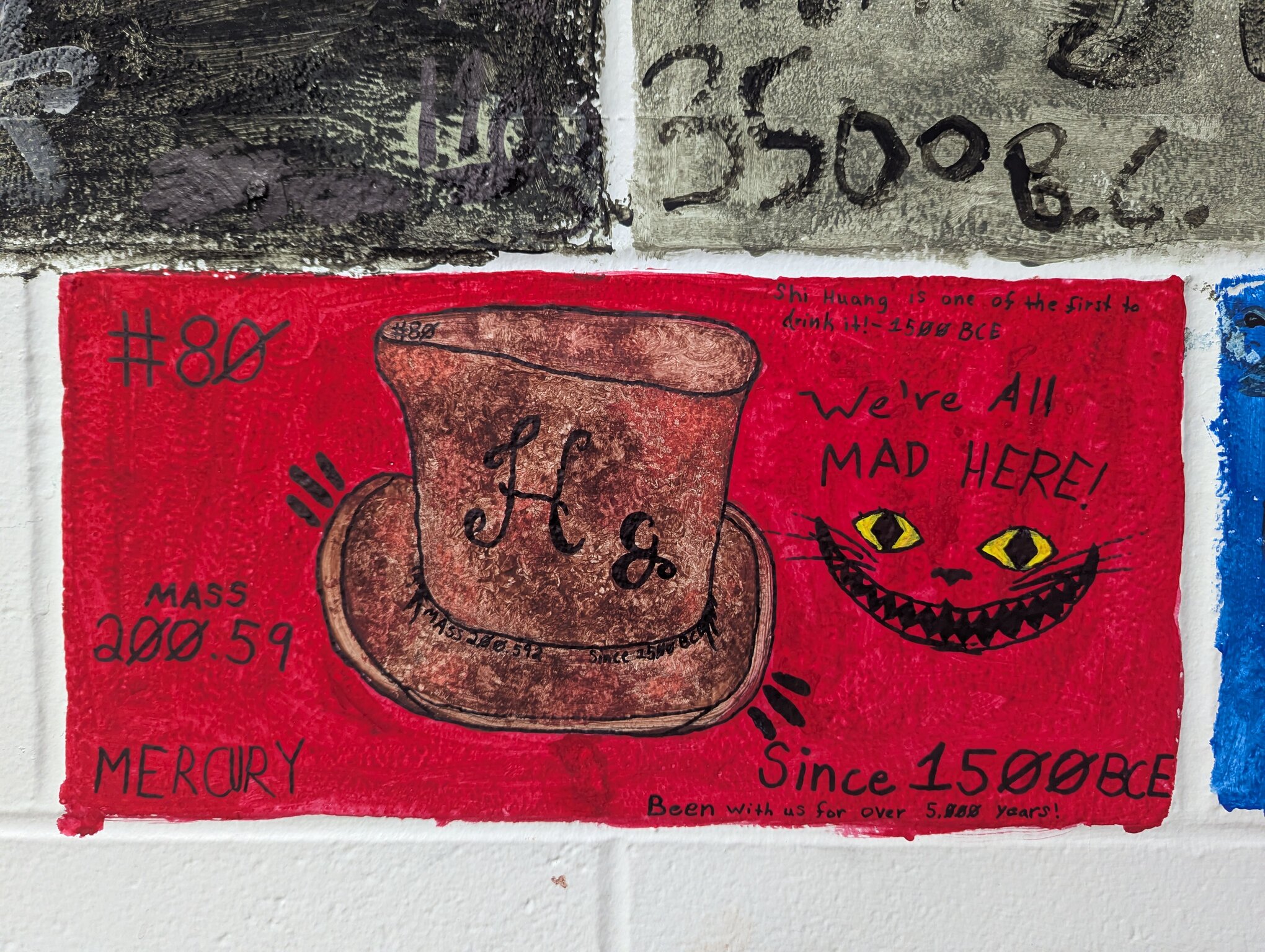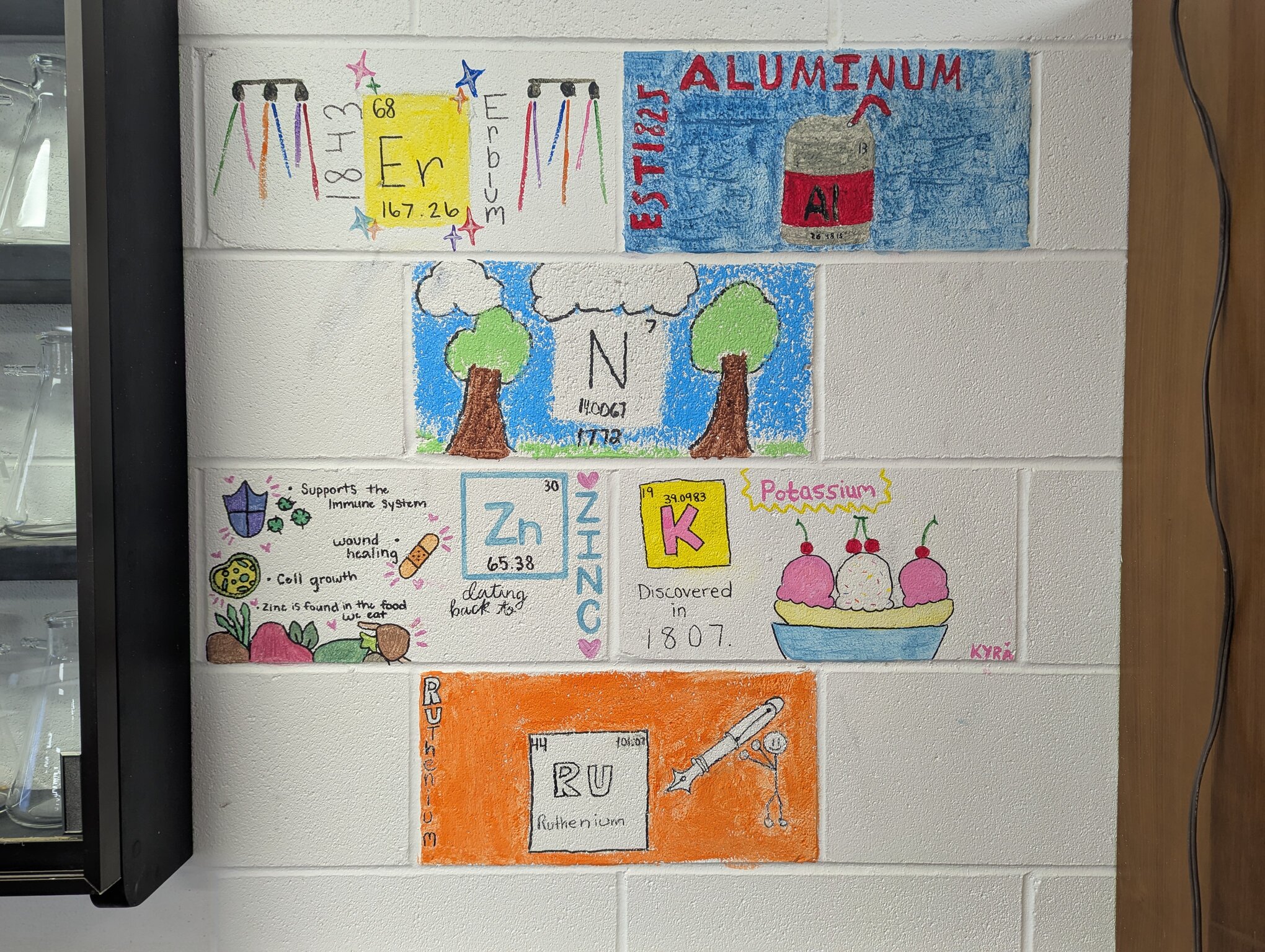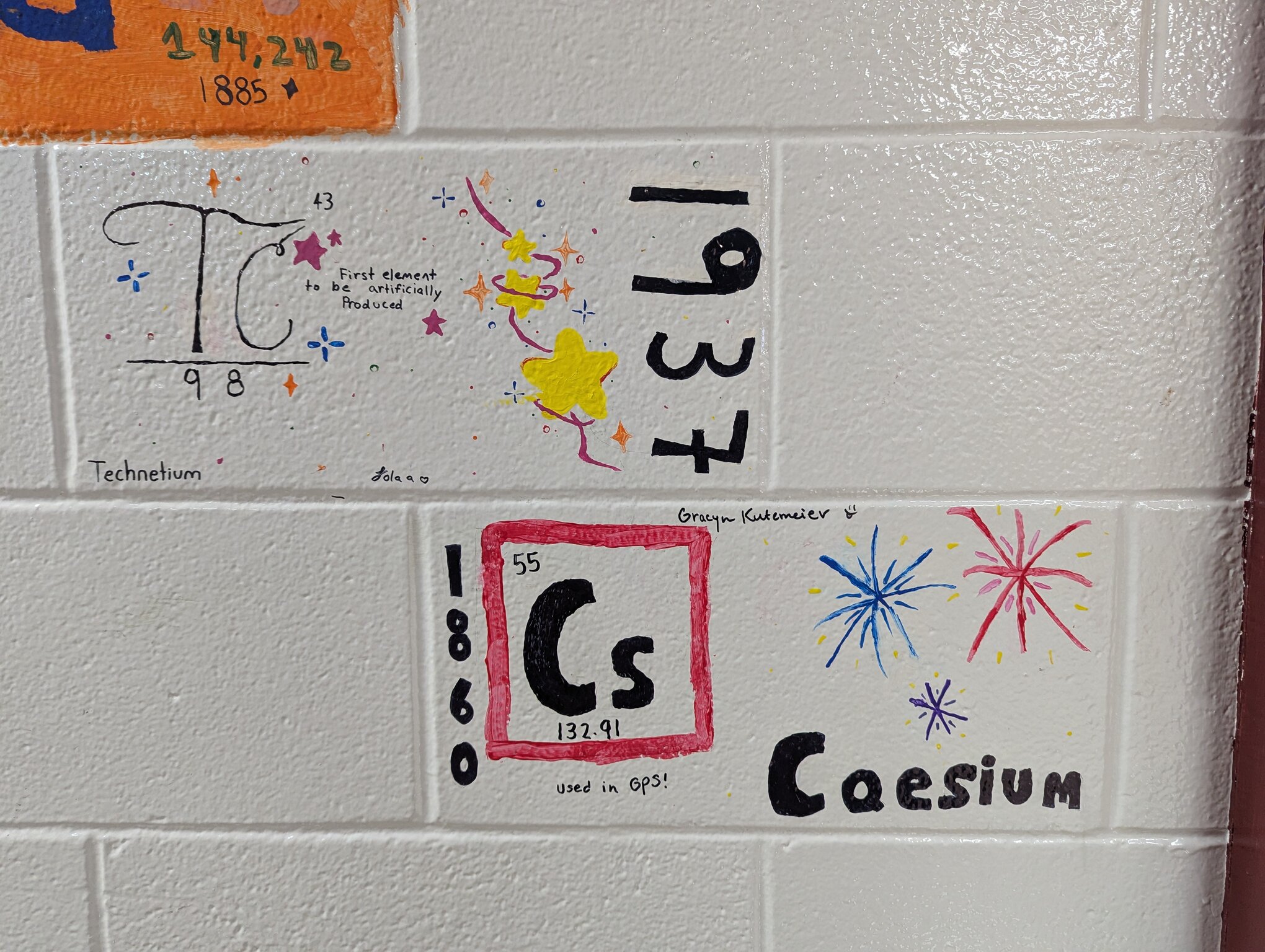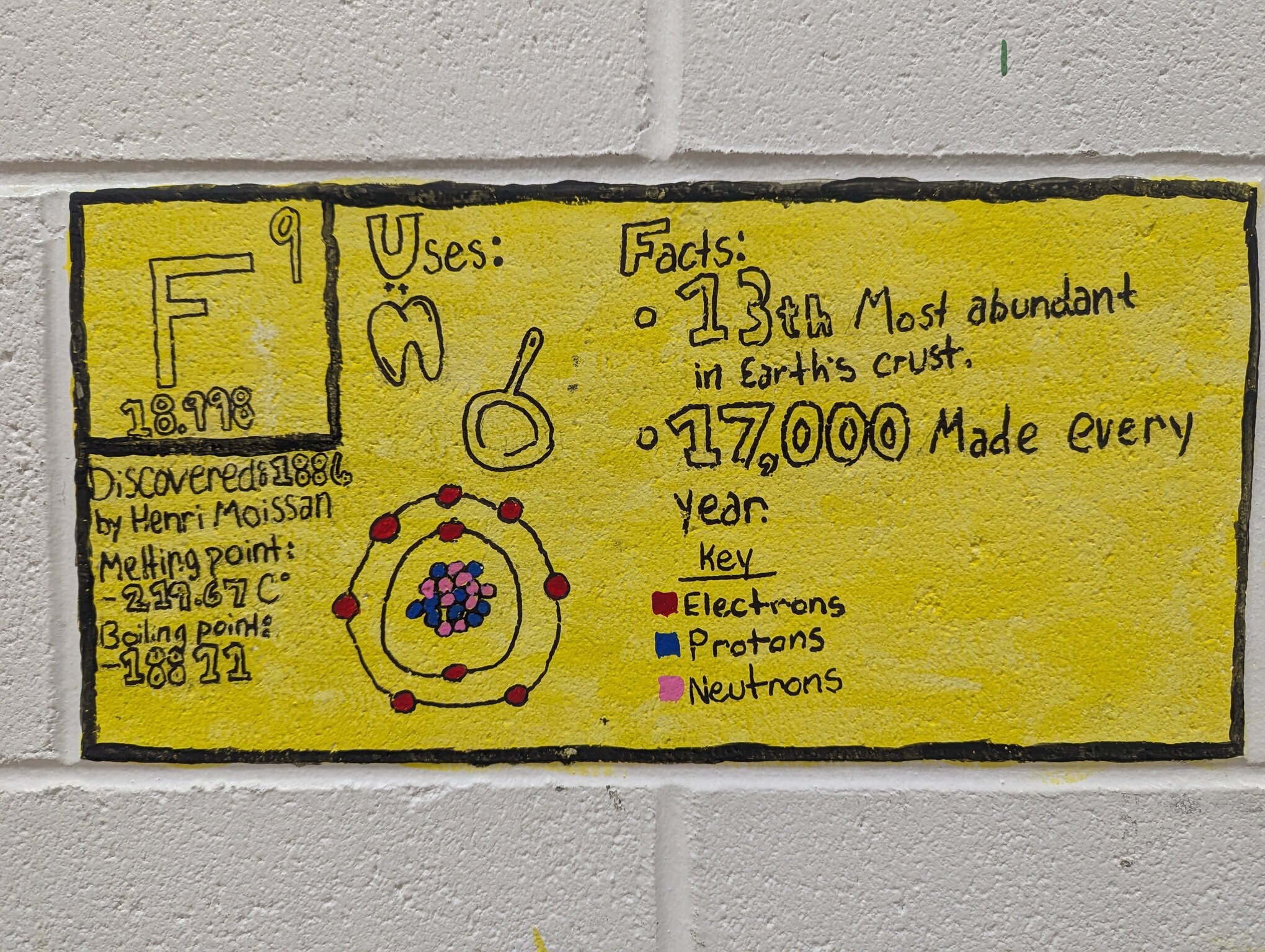Adopt an Atom
When I moved into my classroom, there was a great periodic table on the ceiling. Some teacher, previous to me, had students research and create posters for elements that were then wrapped on the ceiling tiles to make an enormous periodic table. It was full of color and was a great piece for the room.
Then, we had an insurance audit.
The auditors decided that it had to come down. I didn't have a choice and it came down at the end of my first year there.
Since then, I've been pining for more color and expression. I decided to do my own "adopt an atom" project with students this year and I got permission to have them paint (as a project option) their own cinderblock in my room. They were already a flat white, so it was a ready-made canvas.
Students each chose an atom (no repeats!) and did some research on physical and chemical properties to reinforce the atomic structure work we've been doing. I also asked them to learn about the name origin along with when and how it was first defined as an element. Lastly, they had to learn how it was used or about a curiosity that particular atom has. I got some great projects and students were genuinely surprised at some of the things they learned. Below is a selection of some of the best murals I got last week. Let me know if one stands out to you.




Others were more literal in their translation, but provide just as much visual interest.

In the end, we were able to do about 30 painted blocks in the room, which was more than I expected. The rest of the students did posters, bringing our total up to about 90 out of 118 atoms described. It went over great and everyone exercised the creative parts of their brains for a change of pace. I'm looking forward to next year's paintings.

Comments